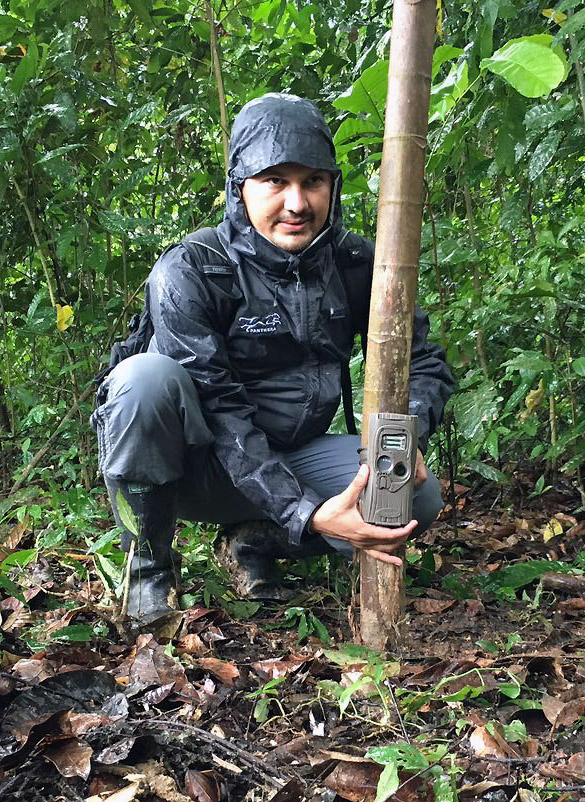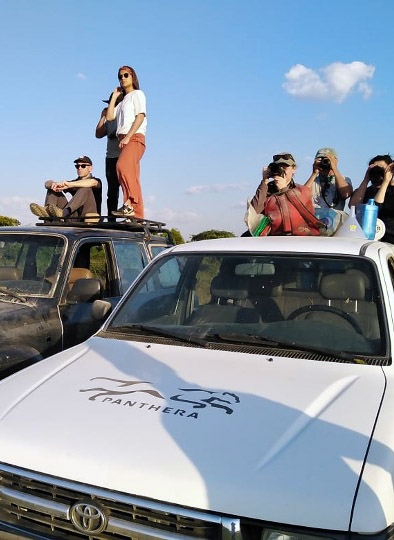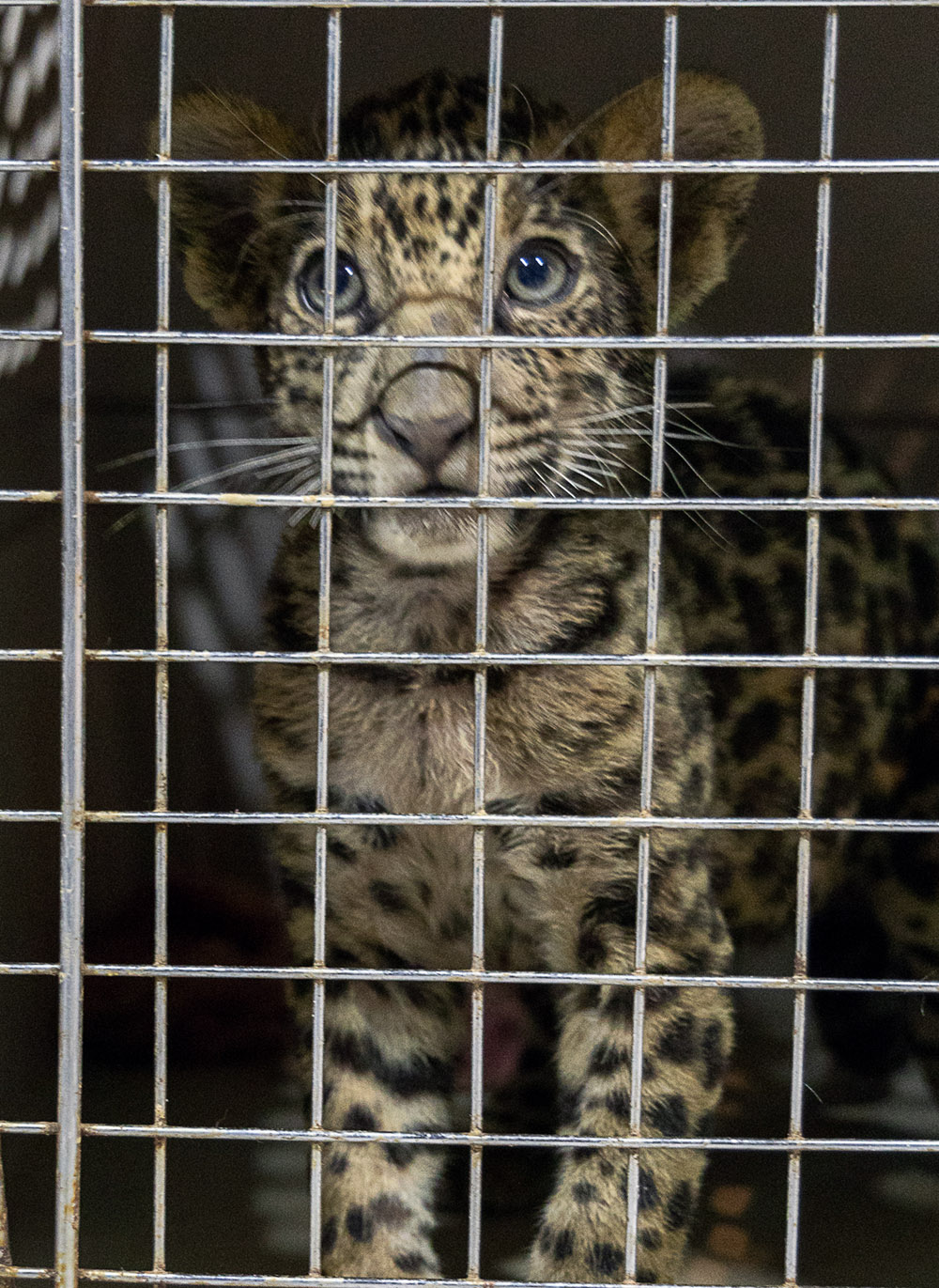Strategic Lines of Work

Science, Research and Monitoring
Panthera is committed to implementing effective conservation actions and programs based on the best available science. In many cases, our scientists are not just utilizing conservation data — they’re creating and contributing to it.
Through research, we can fill important knowledge gaps concerning wild cat ecology and conservation and assess the different threats they face across their range. As we become more aware of each species-specific need, threats, and conservation challenges, we can develop tangible conservation approaches that may have a positive impact not only for wild cats but over the vast landscapes they share with us. In addition, by gathering new and robust information on the secret life of this elusive species, we can provide evidence to inform decision-makers about conservation priorities and actions that need to be prioritized to guarantee species survival and maintenance over time.

Ecotourism
At Panthera we understand nature tourism as an opportunity to contribute both to the conservation of biodiversity and to increase scientific knowledge of wild cat species. For this reason, since 2014 we have been working in the department of Casanare with the Hato La Aurora Natural Reserve, developing the only tourist destination for Jaguars' sighting in Colombia. With this, we obtained the Natural Wealth award for Nature Tourism and over the years we have monitored nearly 70 Jaguar specimens in the reserve, and we have developed protocols for sighting and reconstructed their family tree.
Human-Felid Coexistence
Living alongside large carnivores like big cats can be challenging. When humans deplete wild cats’ natural prey by destroying habitats and overhunting, wild cats may turn to livestock for an easy meal. For ranchers and herders, an attack on livestock may mean an unrecoverable economic loss. The threat to their livelihood can lead people to kill local cats in retaliation or to prevent future losses. To mitigate this issue, Panthera Colombia designed the Feline-Human Coexistence Project. We help foster coexistence between humans and wild felids in key conservation areas by:
- Reducing negative interactions with and perceptions towards wild cats;
- Promoting sustainable practices and land management within communities; and
- Improving government responses to negative interactions with these species.

Counter Wildlife Crime
Wild cats are targeted to enter into the pet trade and the lucrative illegal wildlife market that seeks their furs, teeth, bones, and other body parts. Poaching adds to the peril these felines endure. Our third strategic line is focused on combatting the illegal trafficking of wild felines and their parts by:
- Strengthening Government Agencies: We collaborate with relevant government agencies to enhance their capacity to combat wildlife trafficking. This involves providing support for information gathering, capacity building, and targeted interventions.
- Understanding Socio-Ecological Drivers: To tackle the root causes of the illegal trade, we conduct comprehensive research to understand the socio-ecological factors that drive this crime. This knowledge guides the development of more effective interventions.
- Promoting Innovative Technological Strategies: We leverage advanced technologies, such as profiling software, data analytics, and genetics, to improve the detection and disruption of illegal wildlife trafficking activities.
- Promoting Alternative Livelihoods: Recognizing that certain communities or groups engage in wildlife trafficking due to limited economic opportunities, we work to promote alternative livelihoods. By offering viable alternatives, we aim to reduce their reliance on illegal activities.
- Education: Highlighting to the public the importance of the wild cats and the impact of the extraction from the wild is pivotal to reduce demand; Likewise, promoting appropriation of local communities, understanding the value of live and free felids in the ecosystems.
Capacity Building
In Latin America, raising awareness and building the capacity of local organizations and environmental authorities are essential to sustainable wild cat protection. For this reason, Panthera Colombia’s fourth strategic line of work involves capacity building with authorities and stakeholders, accompanied by public education to change perceptions about wild cats. We have designed an education program for stakeholders, including educational institutions, decision-makers, journalists, academia and the public.

Jaguar School / Escuela Jaguar
For Panthera Colombia, education is a fundamental tool to achieve a positive impact in areas in which hunting jaguars and other cats has historically been a routine and cultural activity and human-feline conflict causes retaliatory hunting.
Jaguar School is an Environmental Education Initiative created by Panthera Colombia, which seeks to raise awareness and generate changes in attitudes and perceptions about the jaguar and other wild cats. We utilize and strategies promoting knowledge, coexistence and conservation, addressing topics such as:
- Wild cat ecology
- The importance of the jaguars in ecosystems
- The jaguar as a cultural element
- Threats to jaguar conservation
- Strategies for the conservation of Wild cats
Between 2018 and 2023, Escuela Jaguar reached 1,895 people in Colombia and Peru with 62 activities that included workshops, a jaguar festival, local meetings and training, among others. We aim to continue positively impacting and educating children and young people because they are agents of change and will be decision-makers in their communities.
Learn More About the Jaguar School

